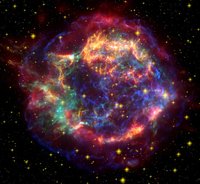
Iron is unusually abundant in the universe considering its place on the Periodic Table because it represents the “end of the line” of nuclear fusion. In the interior of terrestrial planets, iron exists in reduced form as Fe(0) and Fe(II), yet, on the surface of Earth today, the oxidized form, Fe(III), is stable. Looking to the very early Earth, life originated and first proliferated in an anoxic environment where reduced iron was benign, abundant, and soluble. We hypothesize that for perhaps the first 2 billion years of life on Earth Fe(II) was a ubiquitous and generally useful cofactor for nucleic acids, with roles in folding, catalysis and processing by proteins. As Earth evolved free oxygen, and Fe(III) became stable on its surface, Fe(II) was replaced as the primary cofactor for nucleic acids by Mg(II) in parallel with known metal substitutions of metalloproteins. To test this model, we assay the ability of (i) RNA to fold and catalyze reactions in the presence of Fe(II), and (ii) nucleic acid processing enzymes to use Fe(II) in place of Mg(II) during catalysis. The results show that Fe(II) can indeed substitute for Mg(II) in RNA folding and catalysis and in protein enzymology involving nucleic acids. In fact, it appears that Fe(II) supercharges RNA. The data are consistent a model in which modern biochemical systems retain latent abilities to revert to primordial Fe(II)-based states when exposed to ancient earth conditions.
If the hypothesis of a fundamental change from Fe(II) to Mg(II) for some key biological functions is correct, we can place constraints on the timing of this from the ancient rock record. Iron-rich marine sedimentary rocks, including jaspers (hematite+chert) and iron formations, contain clues in their chemical and isotopic compositions for when Fe(II) started to become limiting. One constraint is the “Great Oxidation Event” (GOE) at ~2.3 b.y. ago, but evidence now exists for oxygenation of shallow ocean water as far back as 3.2 b.y. ago, nearly one billion years before the GOE. In this talk, we will explore the changing role of iron in biology and the surface environments of the ancient Earth.
 A Talk With Jim Green
A Talk With Jim Green What Can Extant Genomes Reveal About Early DNA Metabolism?
What Can Extant Genomes Reveal About Early DNA Metabolism? What We Talk About When We Talk About Earth's Oxygenation
What We Talk About When We Talk About Earth's Oxygenation Bowling With Astrobiologists: A Twisted Path Toward the Origin of DNA
Bowling With Astrobiologists: A Twisted Path Toward the Origin of DNA